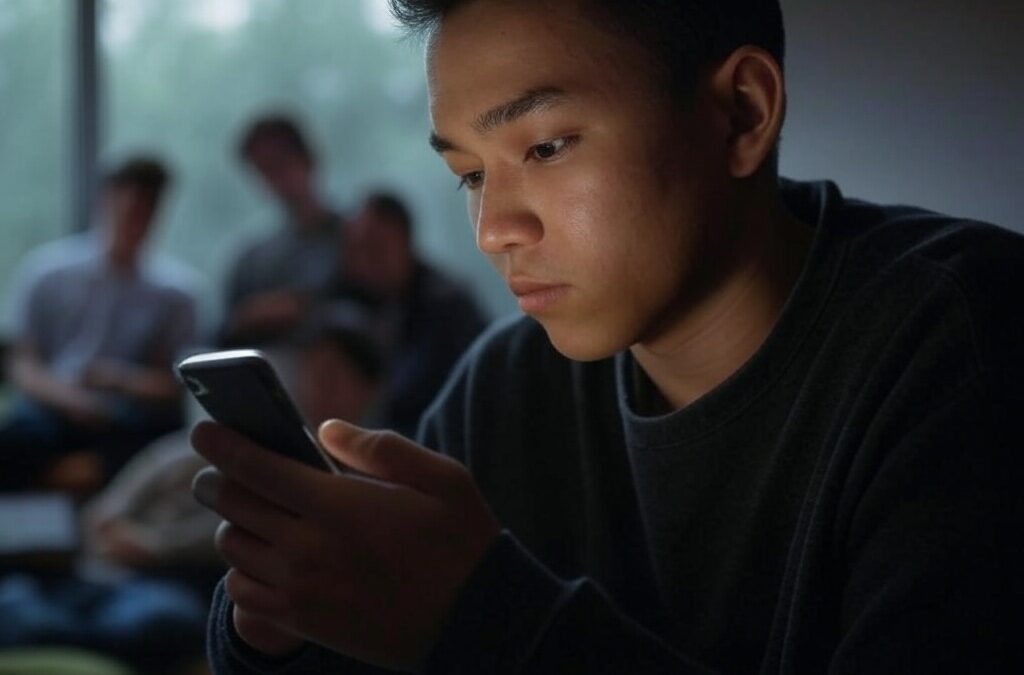In the quest for knowledge and understanding, questions serve as the compass that guides our intellectual journey. Whether you’re a student, a researcher, or a curious mind, the right questions can unlock a world of insights. In this article we delve into a curated collection of thought-provoking queries that will inspire exploration, spark critical thinking, and lead you to discover new horizons of wisdom. Join us on a quest for knowledge as we explore these 30 insightful questions that will expand your mind and enrich your intellectual pursuits.
What is a Guiding Question?
Guiding questions are thoughtfully crafted queries designed to steer, focus, and facilitate meaningful exploration, analysis, and critical thinking within a particular context or subject matter. These questions serve as intellectual signposts, guiding individuals or groups through the process of inquiry, problem-solving, or decision-making by encouraging deeper reflection and a structured approach to gathering information or arriving at conclusions.
Key characteristics of guiding questions include:
- Clarity: Guiding questions are clear and concise, avoiding ambiguity or vagueness, to ensure that respondents or learners understand the specific issues or topics under consideration.
- Purpose: They are purpose-driven and align with the overarching goals or objectives of a project, study, or discussion. These questions help direct efforts toward meaningful outcomes.
- Exploration: Guiding questions encourage exploration and investigation, prompting individuals to delve into a subject, issue, or concept from various angles and perspectives.
- Critical Thinking: They stimulate critical thinking by prompting individuals to analyze, evaluate, and synthesize information, fostering a deeper understanding of complex issues.
- Focus: These questions serve as a compass, keeping the conversation or research focused on relevant aspects and preventing it from wandering into irrelevant territories.
- Open-Ended: Guiding questions are typically open-ended, allowing for multiple responses and interpretations. They foster discussion and debate, rather than seeking a single, definitive answer.
- Contextual Relevance: They are tailored to the specific context, considering the audience, subject matter, and goals. As a result, they are more likely to generate meaningful insights.
- Iterative Nature: Guiding questions can evolve as the process unfolds, adapting to emerging insights and findings, ensuring ongoing relevance.
Guiding questions are widely employed in various domains, such as education, research, project management, and problem-solving, as they help structure the journey toward deeper understanding and informed decision-making. They play a crucial role in guiding individuals through complex processes and enabling them to navigate the intricacies of the subject matter effectively. In essence, guiding questions are powerful tools that provide a roadmap for exploration, encouraging intellectual engagement, and aiding in the pursuit of knowledge and insights.
Best Guiding Questions Examples to Enhance Critical Thinking
1. What factors contribute to the success of sustainable businesses in today’s economy? This question encourages an exploration of the elements that enable businesses to thrive while also being environmentally and socially responsible.
2. How can we improve access to quality education in underserved communities? It encourages us to consider strategies for increasing accessibility to quality education in marginalized areas, while also addressing equity issues.
3. What are the main drivers behind climate change, and how can we mitigate their effects? We need to examine the primary causes of climate change and find ways to combat its consequences, with a strong emphasis on environmental responsibility.
4. In what ways do cultural differences impact global business negotiations? It fosters discussion on the effects of cultural diversity on international business deals, highlighting the importance of cultural awareness.
5. What strategies can healthcare systems implement to enhance patient care while controlling costs? This question explores methods for improving the quality of healthcare delivery while managing expenses effectively.
6. How does art reflect and influence societal change throughout history? It prompts an investigation into the relationship between art and cultural shifts, underlining the role of creative expression in influencing society.
7. What are the ethical implications of AI in autonomous decision-making? It encourages a discussion on the ethical considerations of artificial intelligence in making decisions without human intervention.
8. What can we learn from past pandemics to better prepare for future health crises? This question prompts a look into historical pandemics to derive lessons that can enhance preparedness for future health emergencies.
9. How can we address the digital divide and ensure internet access for all? It focuses on strategies to bridge the gap in internet access and promote digital inclusivity.
10. In what ways does the media influence public opinion and political discourse? It stimulates an exploration of the media’s role in shaping public opinions and political discussions, emphasizing media literacy.
11. What factors contribute to the rise of mental health issues in modern society? It encourages an analysis of the causes behind the increasing prevalence of mental health challenges, promoting awareness.
12. How can organizations promote gender equality in the workplace effectively? This question calls for strategies to advance gender equality within work environments, emphasizing diversity and inclusion.
13. What are the potential economic consequences of a global shift towards renewable energy sources? It starts a discussion on the potential economic impacts of transitioning to renewable energy, highlighting sustainability.
14. How do different cultures approach conflict resolution and negotiation? This question explores the diverse methods different cultures use to manage conflicts, emphasizing cross-cultural understanding.
15. What innovative technologies can revolutionize the agriculture industry and ensure food security? It prompts an examination of technology’s potential to transform agriculture and ensure a stable food supply.
16. How can inclusive design principles benefit individuals with disabilities in our communities? It starts with a discussion about how inclusive design can make things easier for people with disabilities and improve their quality of life.
17. What are the long-term effects of social media on human relationships and mental health? It makes people want to learn more about how social media affects mental health and personal relationships.
18. How can we balance economic growth with environmental conservation and sustainability? This question calls for strategies to reconcile economic development with environmental preservation, emphasizing sustainability.
19. What are the root causes of poverty, and how can we address them at a systemic level? It encourages an analysis of the underlying causes of poverty and strategies for addressing them systemically.
20. In what ways can international diplomacy promote world peace and security? This question focuses on the role of international diplomacy in fostering global peace and security.
21. How has the perception of beauty evolved across different cultures and time periods? It lets you think about how ideas of beauty have changed over time and across cultures.
22. What ethical considerations should guide genetic engineering and biotechnology advancements? This question encourages an examination of the ethical principles that should underpin advancements in genetic engineering and biotechnology.
23. What can history teach us about the impacts of political revolutions on society? It stimulates an exploration of historical political revolutions and their consequences for society.
24. How do urban planning and architecture affect the well-being of city residents? This question calls for an examination of how city planning and architecture influence the quality of life in urban areas.
25. What strategies can foster a more inclusive and diverse political landscape? It focuses on methods to create a political environment that values inclusivity and diversity.
26. How does globalization influence local economies and cultural identities? This question prompts an analysis of how globalization affects local economies and cultural identities.
27. What role does education play in addressing the challenges of the 21st century? It encourages a discussion on the role of education in preparing individuals to tackle the challenges of the modern era.
28. How can businesses balance profitability with corporate social responsibility effectively? This question calls for strategies to achieve a balance between profit-making and social responsibility within businesses.
29. What impact does consumer behavior have on environmental sustainability? It stimulates an exploration of how consumer choices affect environmental sustainability.
30. In what ways can communities promote social cohesion and reduce inequality? It focuses on methods to build social cohesion and reduce inequality within communities.
Looking at these 30 examples of good guiding questions has provided a lot about how to get people to think critically and guide discussions. You can get new ideas, make smart decisions, and feel confident when talking about difficult topics by using these thought-provoking questions in your projects or conversations. Always keep in mind that a great question is one that can take us on a journey of discovery. Remember these questions as a guide, and let them lead you to a better understanding and even more significant outcomes.
Rules When Making a Good Guiding Question
- Make sure your question doesn’t have a simple yes or no answer. Open-ended questions encourage deeper exploration and discussion.
- Make sure the question is short and clear. Do not use language that is too hard to understand or that is complicated.
- Each guiding question should address one specific topic or issue to prevent confusion and maintain clarity.
- Make sure the question has something to do with the problem or topic at hand, so it is relevant to the project or discourse.
- Make questions that spark curiosity and critical thinking, prompting participants to dig deeper into the subject matter.
- Do not use bias or leading words that could influence how people respond. Questions should be fair to everyone.
- Find an appropriate balance between being broad enough to allow for different points of view and specific enough to help guide the discussion.
- Create questions that captivate the interest of participants, motivating them to actively contribute to the conversation.
- A carefully constructed guiding question lets people see things from different points of view, which leads to a more interesting conversation.
- Be open to revising your guiding questions as the discussion or project progresses. If you need to, make changes to better fit the objectives and insights.
Upon learning all of these, adapt these guiding questions to different contexts and use them as valuable tools that promote critical thinking and decision-making. You can explore different aspects of a problem, consider various perspectives, and ultimately make well-informed and responsible choices with their help.
Read Also: 30 Benefits of Studying Psychology
The Most Popular on BitGlint

40 Social Dilemma Examples in the World & Real Life
Social dilemmas are everywhere. They shape the choices we make at work, in our communities, and even on a global...

30 Favor Examples & Definition
Doing a favor means helping someone without expecting anything in return. It’s an act of kindness that can strengthen...

30 Naivety Examples & Definition
Naivety is something most people experience at some point in their lives. It often starts in childhood, but for some,...

20 Chronology Examples & Meaning
Chronology is something we use more than we realize. It shows up in conversations, in how we remember the past, and in...

30 Wishful Thinking Examples & Meaning
Wishful thinking is something we all do at some point. You hope things will turn out fine—even if there’s no real...

20 Examples of Gravity & What Gravity Really Is
Gravity is one of the most important forces in the universe, but many people don’t fully understand what it really is...

20 Examples of Secondary Consumers in the Food Chain
Secondary consumers are animals that eat other animals—usually herbivores that feed on plants. They’re an important...
Get Inspired with BitGlint

